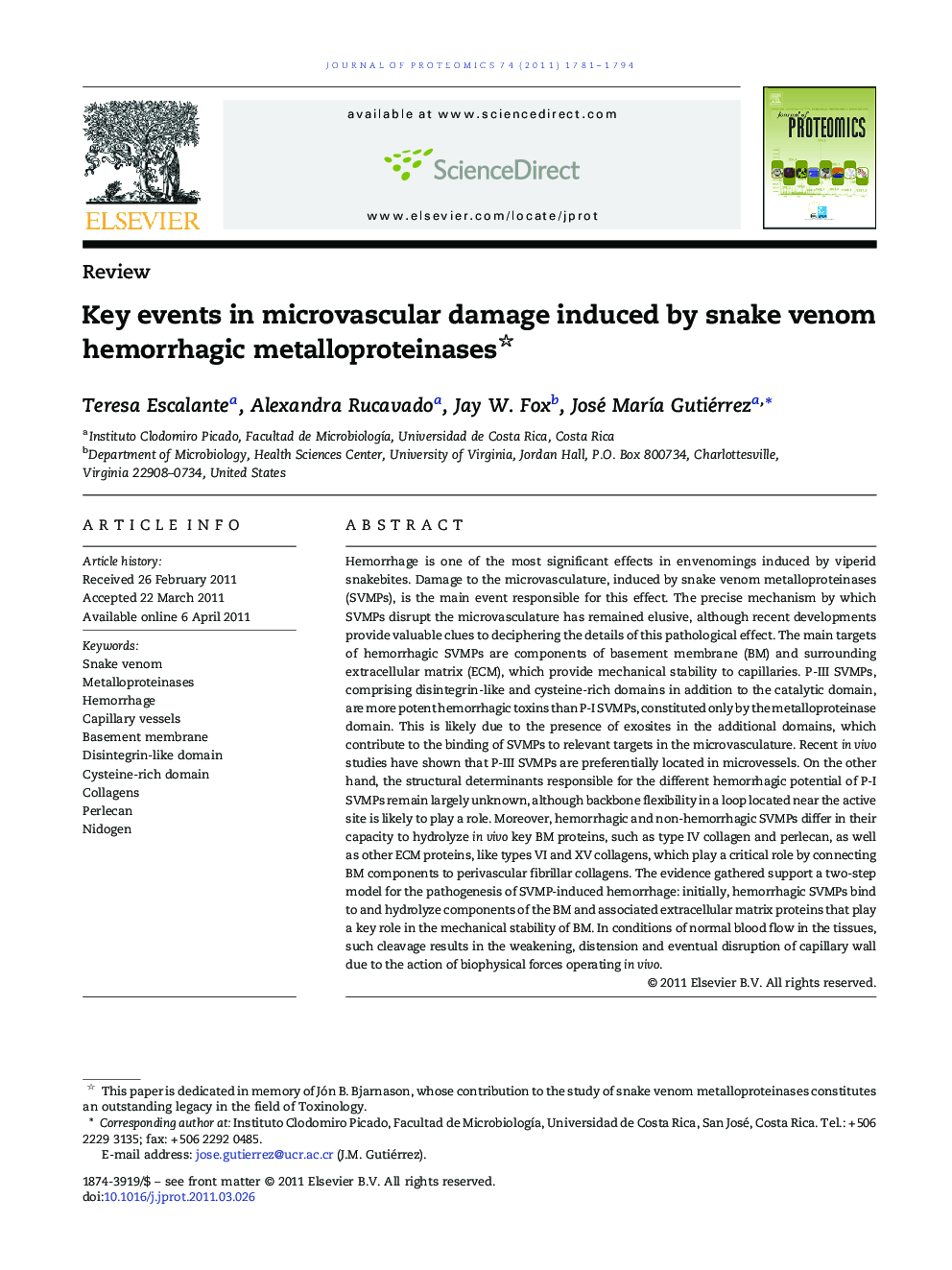| کد مقاله | کد نشریه | سال انتشار | مقاله انگلیسی | نسخه تمام متن |
|---|---|---|---|---|
| 1227104 | 968345 | 2011 | 14 صفحه PDF | دانلود رایگان |

Hemorrhage is one of the most significant effects in envenomings induced by viperid snakebites. Damage to the microvasculature, induced by snake venom metalloproteinases (SVMPs), is the main event responsible for this effect. The precise mechanism by which SVMPs disrupt the microvasculature has remained elusive, although recent developments provide valuable clues to deciphering the details of this pathological effect. The main targets of hemorrhagic SVMPs are components of basement membrane (BM) and surrounding extracellular matrix (ECM), which provide mechanical stability to capillaries. P-III SVMPs, comprising disintegrin-like and cysteine-rich domains in addition to the catalytic domain, are more potent hemorrhagic toxins than P-I SVMPs, constituted only by the metalloproteinase domain. This is likely due to the presence of exosites in the additional domains, which contribute to the binding of SVMPs to relevant targets in the microvasculature. Recent in vivo studies have shown that P-III SVMPs are preferentially located in microvessels. On the other hand, the structural determinants responsible for the different hemorrhagic potential of P-I SVMPs remain largely unknown, although backbone flexibility in a loop located near the active site is likely to play a role. Moreover, hemorrhagic and non-hemorrhagic SVMPs differ in their capacity to hydrolyze in vivo key BM proteins, such as type IV collagen and perlecan, as well as other ECM proteins, like types VI and XV collagens, which play a critical role by connecting BM components to perivascular fibrillar collagens. The evidence gathered support a two-step model for the pathogenesis of SVMP-induced hemorrhage: initially, hemorrhagic SVMPs bind to and hydrolyze components of the BM and associated extracellular matrix proteins that play a key role in the mechanical stability of BM. In conditions of normal blood flow in the tissues, such cleavage results in the weakening, distension and eventual disruption of capillary wall due to the action of biophysical forces operating in vivo.
Figure optionsDownload high-quality image (54 K)Download as PowerPoint slide
Journal: Journal of Proteomics - Volume 74, Issue 9, 24 August 2011, Pages 1781–1794